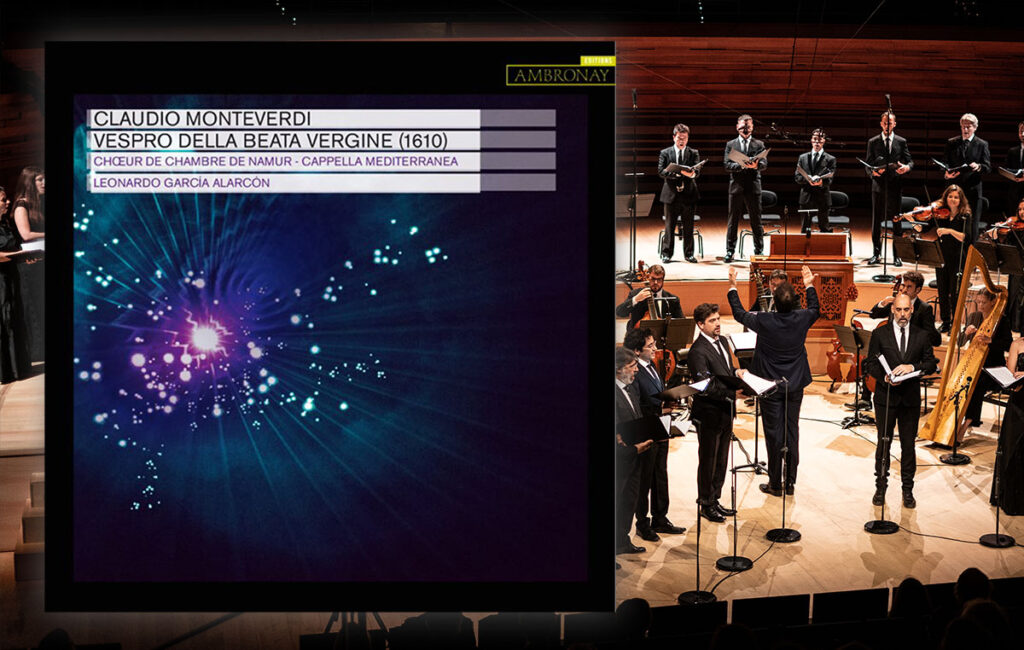


“Just like a beautiful ray of sunlight can cast aside shadows and reveal the unexpected beauty of a facade that you have seen a thousand times or bring a statue to life, monumental music needs light to reveal its wonder. Monteverdi’s Vespro della Beata Vergine stands out as a universal cathedral among the musical monuments of the Baroque era. Composed at the very beginning of the Counter-Reformation, this liturgical score revolutionised approaches to ritual music. This is clearly what Leonardo Garcia Alarcon shows us in this new production of the Vespers.“
Pedro-Octavio Diaz, Muse Baroque
There are works that remain aloof and sublime, their mystery only revealed through genius or cunning. But there are also exceptional performers and ensembles who know how to approach these masterpieces with delicacy and humility. Just like a beautiful ray of sunlight can cast aside shadows and reveal the unexpected beauty of a facade that you have seen a thousand times or bring a statue to life, monumental music needs light to reveal its wonder. Monteverdi’s Vespro della Beata Vergine stands out as a universal cathedral among the musical monuments of the Baroque era. Composed at the very beginning of the Counter-Reformation, this liturgical score revolutionised approaches to ritual music. Ten years after Giordano Bruno was burnt at the stake, Monteverdi’s music embraced his universalist theories, infinite not only in its praise, but also in its conditions, as if the divine has penetrated every fibre of life. From the deep sensuality of the psalms and canticles to the mysteries of the medieval-like polyphony, each song becomes a theatre and every heart is transformed into a temple. It is not flagellation, but an adoration of divine creation. Monteverdi subtly turns his back on Palestrina’s sobriety, Allegri’s aloofness and Gabrielli’s strange harmonies, instead embracing the new Baroque spirit in his score. The madrigal brims with it, providing us with a passionate vision.
This is clearly what Leonardo García Alarcón has brought us in this new production of the Vespers. This double album, which was recorded live at the Abbatiale d’Ambronay during the 34th Festival d’Ambronay, allows us to reclaim this Baroque masterpiece. The revival is in fact a rediscovery. Leonardo García Alarcón and his Cappella Mediterranea have grown accustomed to finding new sounds and unexpected details in every score. Garcia Alarcón not only knows how to surround himself with an incredible musical team; he also knows how to vary intensity and create an atmosphere so that these Vespers can attain their full collective scope and transmit a message that is far more sacred than mere praise for the living. The Argentine conductor draws on his in-depth knowledge of Baroque style to create astounding colours, which he applies to each note like a canvas. Once again, we must congratulate him on his commitment and the variety of shades he reveals, much to our delight – and, no doubt, that of the work itself.


